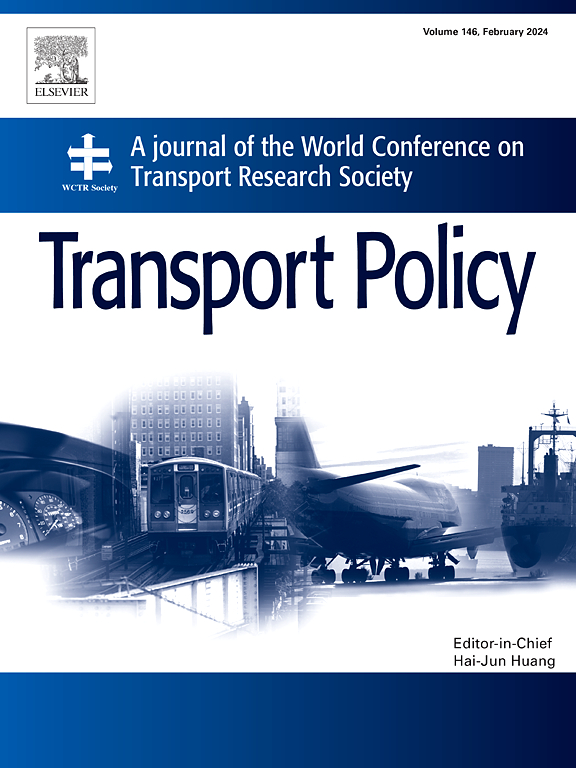The impact of intercity multi-transportation networks on enterprises' total factor productivity
IF 6.3
2区 工程技术
Q1 ECONOMICS
引用次数: 0
Abstract
The intercity multi-transportation networks (MTN), facilitated by aviation and high-speed rail, transcends distance constraints on factor flows, significantly enhancing enterprises' total factor productivity (TFP). This study empirically examines the impact of MTN centrality on enterprises' TFP using a panel dataset (“city-firm”) of Chinese A-share listed enterprises from 2010 to 2020. This study reveals several key findings: Firstly, increased MTN centrality markedly boosts enterprises' TFP levels. Secondly, these networks enhance enterprises' TFP by strengthening knowledge spillovers, adjusting industrial structures and achieving economies of scale through intercity connections via aviation and high-speed rail. However, knowledge spillover enhancement and industrial structure adjustment play a more prominent role in advancing the technological progress of enterprises, while economies of scale primarily contribute to improving technological efficiency. Thirdly, the impact of MTN centrality on enterprises' TFP varies across space and time. Core cities experience more pronounced improvements compared to peripheral cities. Overall, the study underscores the positive impact of intercity MTN, supported by infrastructure like high-speed rail and aviation, on micro-enterprises and their internal mechanisms.
求助全文
约1分钟内获得全文
求助全文
来源期刊

Transport Policy
Multiple-
CiteScore
12.10
自引率
10.30%
发文量
282
期刊介绍:
Transport Policy is an international journal aimed at bridging the gap between theory and practice in transport. Its subject areas reflect the concerns of policymakers in government, industry, voluntary organisations and the public at large, providing independent, original and rigorous analysis to understand how policy decisions have been taken, monitor their effects, and suggest how they may be improved. The journal treats the transport sector comprehensively, and in the context of other sectors including energy, housing, industry and planning. All modes are covered: land, sea and air; road and rail; public and private; motorised and non-motorised; passenger and freight.
 求助内容:
求助内容: 应助结果提醒方式:
应助结果提醒方式:


